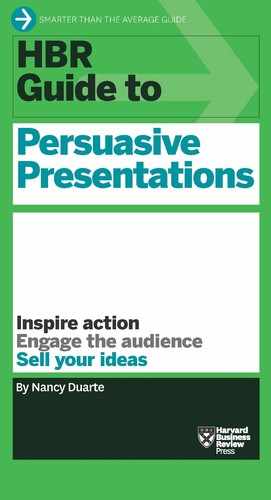Determine the Right Length for Your Presentation
If you ask around, “What do great presentations have in common?” you’ll get one consistent answer: “They’re short.” It’s no secret that people value their time.
But many presenters don’t realize that it costs them time to save the audience time. It’s easier to blather on for an hour than to craft a tight, succinct presentation. Some of the magic of TED is in the 18-minute limit. A great talk goes by quickly. A bad one—well, people can endure it if it’s only 18 minutes.
People in your audience won’t scold you for ending early, but they will for ending late. Out of consideration for them and the day’s agenda, treat the time slot assigned to you as sacred. And keep in mind that people have a 30- to 40-minute presentation tolerance (they’re conditioned by TV shows with creatively produced commercial breaks). Go longer than that, and they’ll begin to squirm.
Here are five ways to tighten your talk and keep your audience engaged:
- Plan content for 60% of your time slot: If you’re given a full hour, take no more than 40 minutes. That will leave time for Q&A, a panel, or some other form of discussion. It’s hard to keep people’s attention for much longer than 40 minutes unless you’ve built in interesting guest speakers, video clips, interactive exercises, and such. As Thomas Jefferson put it, “Speeches that are measured by the hour will die with the hour.”
- Trim your slide deck: If you created an hour-long presentation and want to deliver it in 40 minutes, cut your slides by a third. You can work in slide-sorter mode in PowerPoint, dragging slides to a “slide cemetery” at the very end of the file. Don’t delete them, because you might have to resurrect one or more at the last minute, when you’re answering questions.
- Practice with the clock counting up: As you’re cutting material, rehearse with a clock counting up, not with a timer counting down. If you go over, you need to know how much you’re over. Give critical content the most stage time; cut sections that are more important to you than to the audience. Keep trimming and practicing until you’re consistently within your desired time frame.
- Practice with a timer counting down: Once you’re within the time frame, begin practicing with a timer counting down. Divide your content into quarters and calculate a time stamp for the end of each quarter. For example, if you’re giving a 40-minute talk, know the exact slide you should be on at the 10-, 20-, and 30-minute marks so you can gauge throughout the talk if you’re on time or running over. That way you can trim more easily on the fly.
- Have two natural ending points: Create a false ending (a summary of the ideas covered, for example) and a real ending—perhaps a rousing, inspirational story that drives the message home. If you’re running long, you can drop the second ending and still get your message across. Once at a TED event in India, I was given a 15-minute time slot and had rehearsed it to a T. Two days before the talk, I caught a severe chest cold, so I was heavily medicated when I walked on stage. Before I knew it, the “time’s up” light was blinking, and I wasn’t done. Fortunately, I’d planned two natural places to end my talk, so I wrapped things up with my first ending, citing a beautiful salutation to the land of India from a famous Indian speech. As far as the people in the audience knew, that was the real ending—and they responded warmly.
